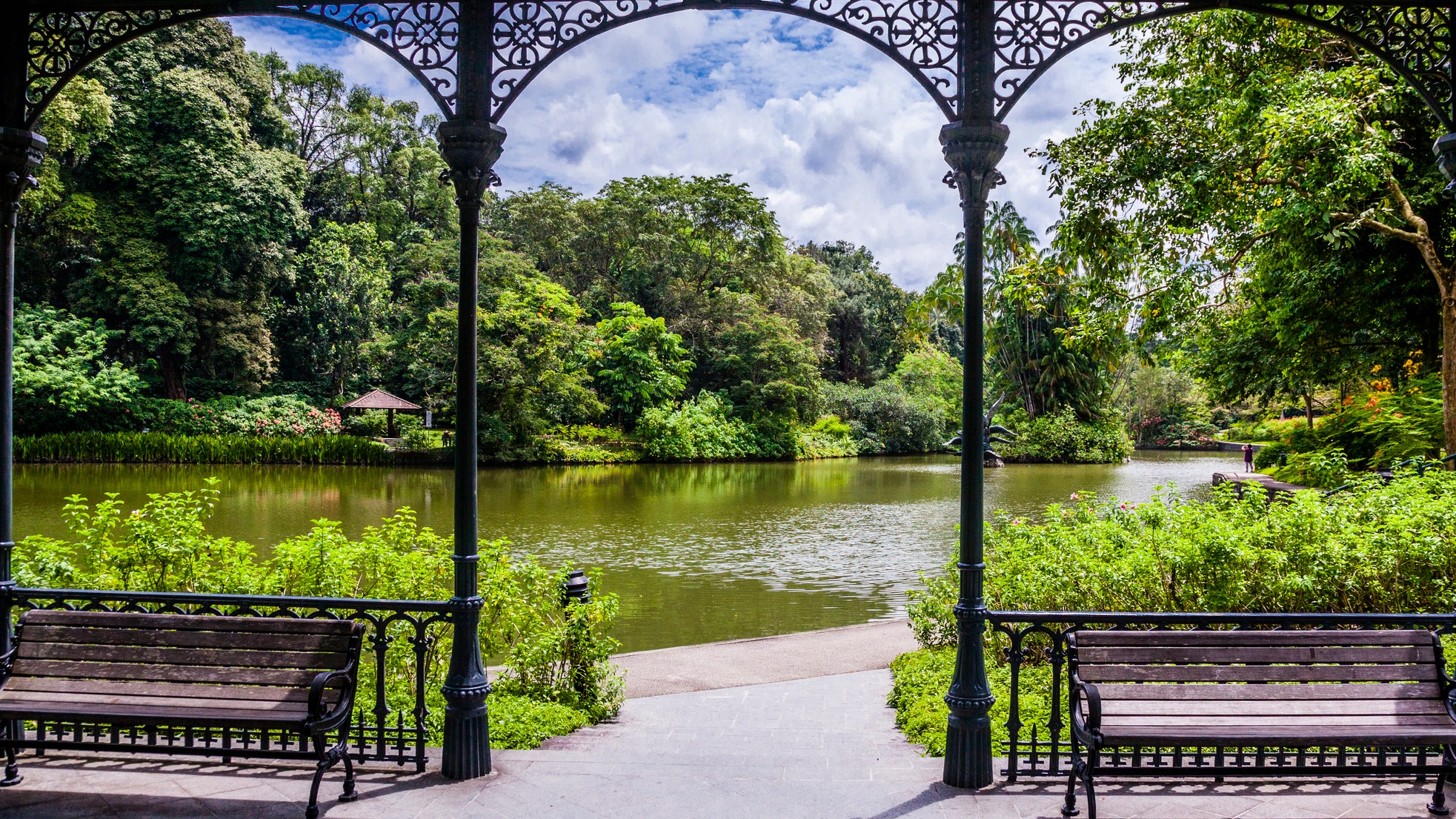Sometimes, florals for spring can indeed be groundbreaking
5 May 2023
There are plenty of green spaces in the world to help us reconnect with nature. Come spring, these gardens bloom in vibrant carpets of reds and violets. If you’re looking for a sanctuary away from the crowds and a visual treat you will remember, here’s our list of the best botanical gardens the world has to offer – from Darjeeling to Giverny and everywhere in between.
Le Jardin Majorelle, Morocco
This garden in Marrakech’s Ville-Nouvelle district, Gueliz, is filled with palms, bamboo thickets, cacti, bougainvillaea, jasmine, water lilies, agaves, weeping willows, datura and thuja evergreens. It was built nearly 40 years ago by the French Orientalist artist Jacques Majorelle, beginning in 1923, and includes a Cubist villa designed by the French architect Paul Sinoir in the 1930s. The property was purchased in the 1980s by fashion designers Yves Saint-Laurent and Pierre Bergé, who worked to restore it. The Berber Museum is housed in the villa, and the Yves Saint Laurent Museum is nearby. The café serves a variety of Moroccan dishes.
Botanical Garden of Forest Research Institute (FRI), India
The Forest Research Institute (FRI), located in the city of Dehradun, is an educational destination surrounded by lush forests. This center is known for its breathtaking beauty, diverse flora, and exquisite architecture with the Himalayas as a backdrop. Several museums are present here, including the Social Forestry Museum, the Timber Museum, and the Silviculture Museum. The Botanical Museum houses a diverse collection of trees from around the world. The best time to visit is from March to June.
Adelaide Botanic Gardens, Australia
Adelaide Botanic Garden is located in the heart of the city, showcasing the beauty and diversity of plants from all over Australia and the world. It spans 50 hectares of beautifully maintained gardens and stunning architecture. Relax in the shade or enjoy coffee while admiring some of Australia’s most beautiful plant collections. Monthly, the evergreen plants in the garden are a delight. The International Rose Garden displays over 2,500 roses from April to September, offering a sea of vibrant colours.
Singapore Botanical Gardens, Singapore
This 164-year-old tropical garden complex, located on the outskirts of Singapore’s Orchard Road shopping district, is the only tropical garden to be declared a UNESCO World Heritage Site. The National Orchid Garden’s stunning blooms are breathtaking, with over 1,000 species and 2,000 hybrids on display. The Healing Garden features over 400 different types of medicinal plants, offering a tranquil retreat focused on traditional medicinal plants used in Southeast Asia.
Brooklyn Botanic Garden, USA
This New York City urban botanic garden fosters delight and curiosity while inspiring appreciation and stewardship of the environment. Opened in 1910, every year, nearly a million people visit the 52-acre garden, which contains over 14,000 plants. It features a number of specialty plant collections, the C. V. Starr Bonsai Museum, and an art gallery. BBG’s Japanese Hill-and-Pond Garden is the best place to catch cherry blossoms in The Big Apple.
Lloyd’s Botanical Garden, India
Created as an annexe of the Calcutta Botanical Garden, Lloyd’s is located below the Eden Sanatorium, covering approximately 16 hectares (40 acres). It is known for its beautiful slopes and is an eminent institution distributing plants, seeds, and specimens from the temperate and sub-temperate Himalayas. The collection includes several species of bamboo, oak, magnolia, and native orchids from the Singalila Ridge.
Arctic-Alpine Botanical Garden, Norway
This stunning expanse located above the Arctic Circle is the world’s northernmost botanical garden, focusing on rare plants from the polar regions. Snow generally covers the ground from October or November, and the magnificent Tibetan blue poppy blooms in late June.
Montreal Botanical Garden, Canada
This 190-acre garden in Montreal features thematic gardens and greenhouses, including a Chinese Garden in Ming dynasty style and a First Nations Garden that highlights medicinal and food plants of Canada’s indigenous peoples. The Alpine Garden showcases delicate alpine plants amidst rocky outcrops.
Kirstenbosch National Botanical Garden, South Africa
Kirstenbosch, located at the eastern foot of Table Mountain, places strong emphasis on cultivating indigenous plants, showcasing the native flora of South Africa. The garden includes a large conservatory and features spectacular protea collections.
Jardim Botânico, Brazil
The botanical garden displays a wide range of Brazilian and foreign flora. With approximately 6,500 species spread across 130 acres, it also contains historical and archaeological monuments. Founded in 1808 by King John VI of Portugal, it opened to the public in 1822 and is home to bromeliads, orchids, carnivorous plants, and cacti.
Kew Gardens, England
Kew Gardens houses the largest botanical collections in the world and holds a Guinness World Record for diversity. It features one of the largest herbariums globally with over 8.5 million preserved plant specimens and is a renowned World Heritage Site.
Fondation Monet, France
From 1883 to 1926, French painter Claude Monet created his gardens in Giverny, inspired by his love of gardening and colours. The gardens are divided into two sections, designed to reflect Monet’s artistic vision with thousands of flowers arranged in patterns.
Desert Botanical Garden, USA
Located in Phoenix, Arizona, this 140-acre garden features over 50,000 plants, with one-third native to the region, including rare and endangered species. The garden hosts numerous events including acoustic concerts, art exhibitions, and seasonal festivals.
Joaquin Antonio Uribe Botanical Garden, Colombia
Designed by renowned Colombian architects, this garden features a butterfly house, cactus garden, and an impressive structure known as the Orchideorama, showcasing a large collection of agave plants, cacti, along with native plants adapted to desert conditions.




